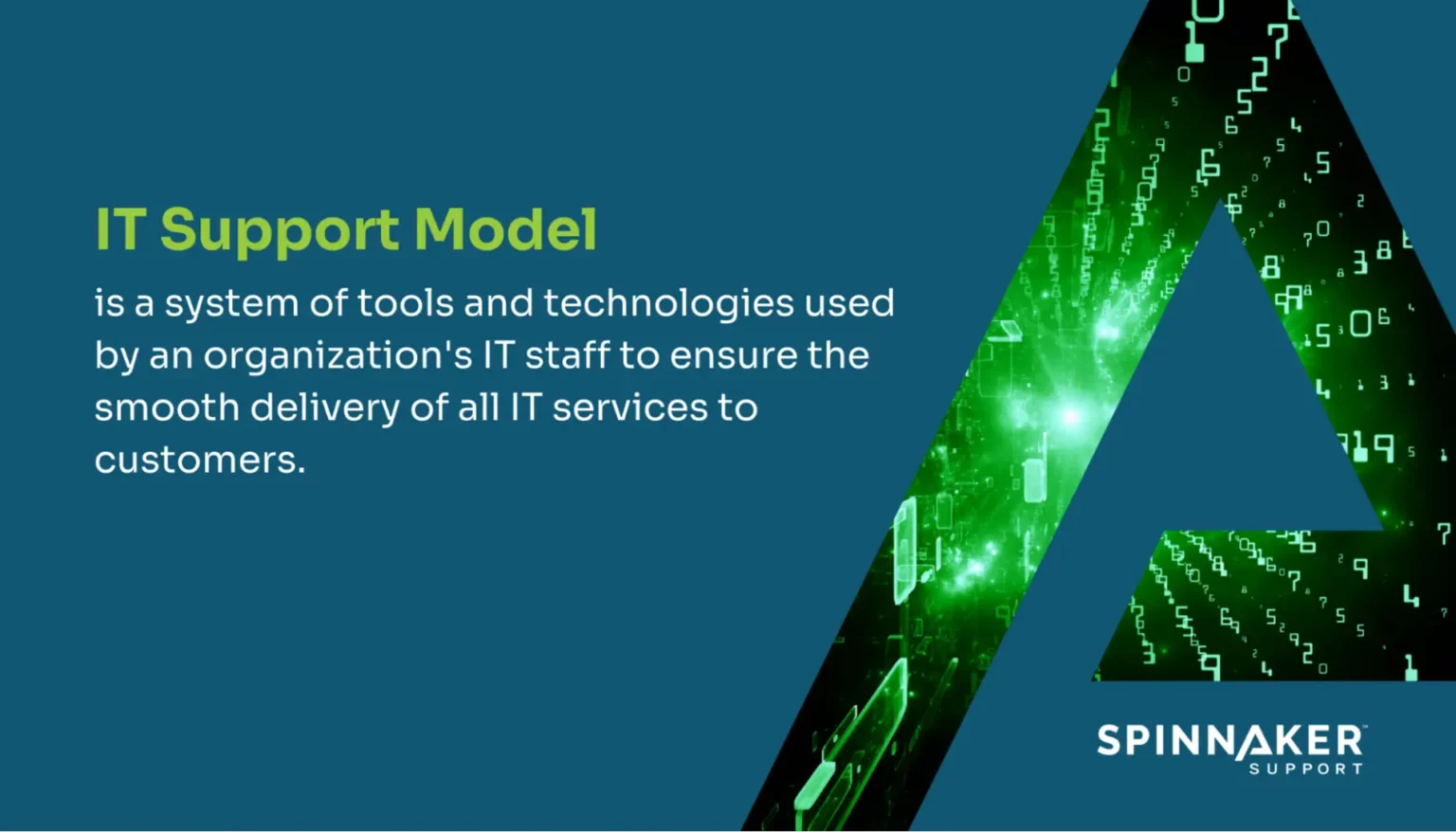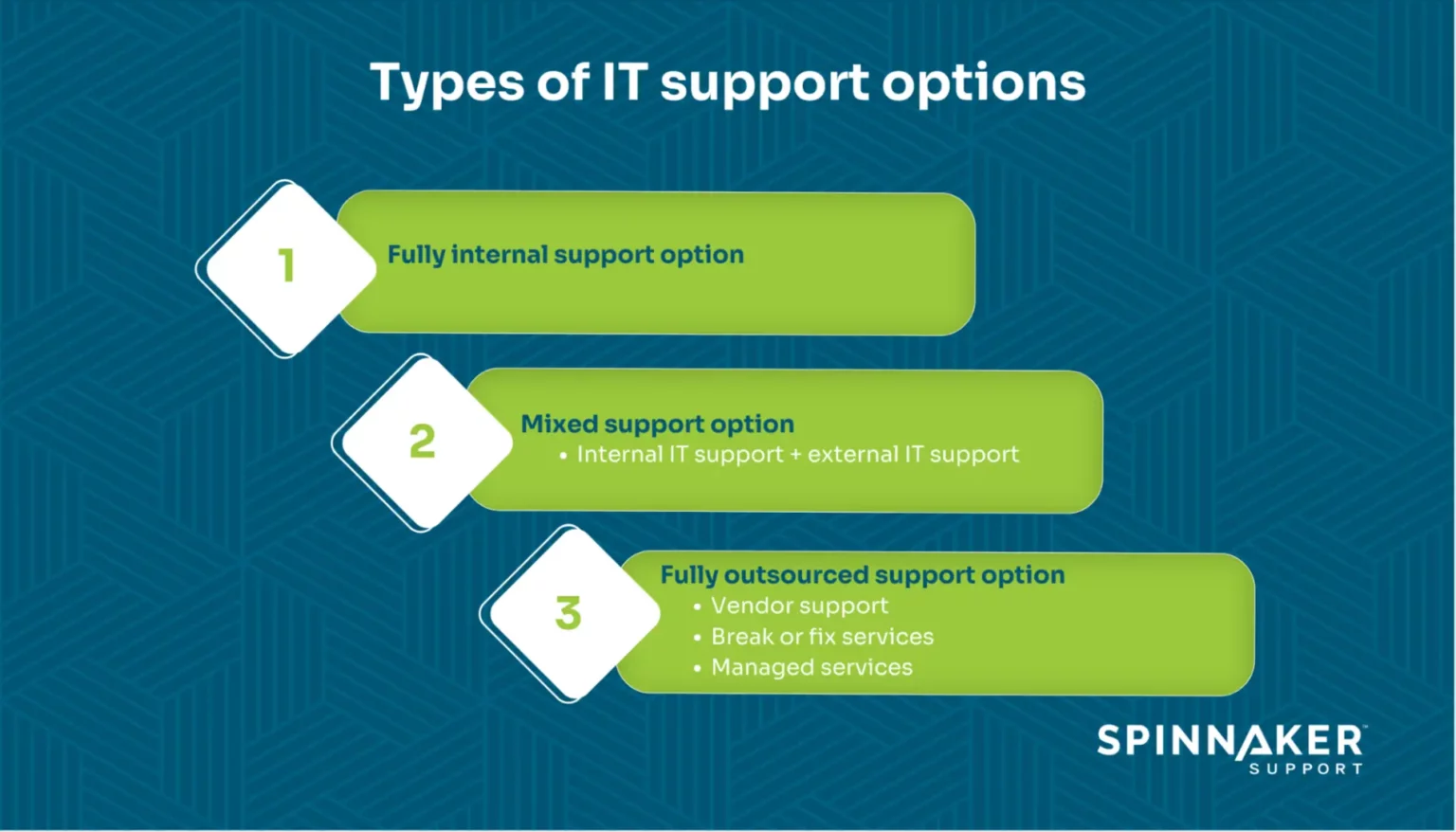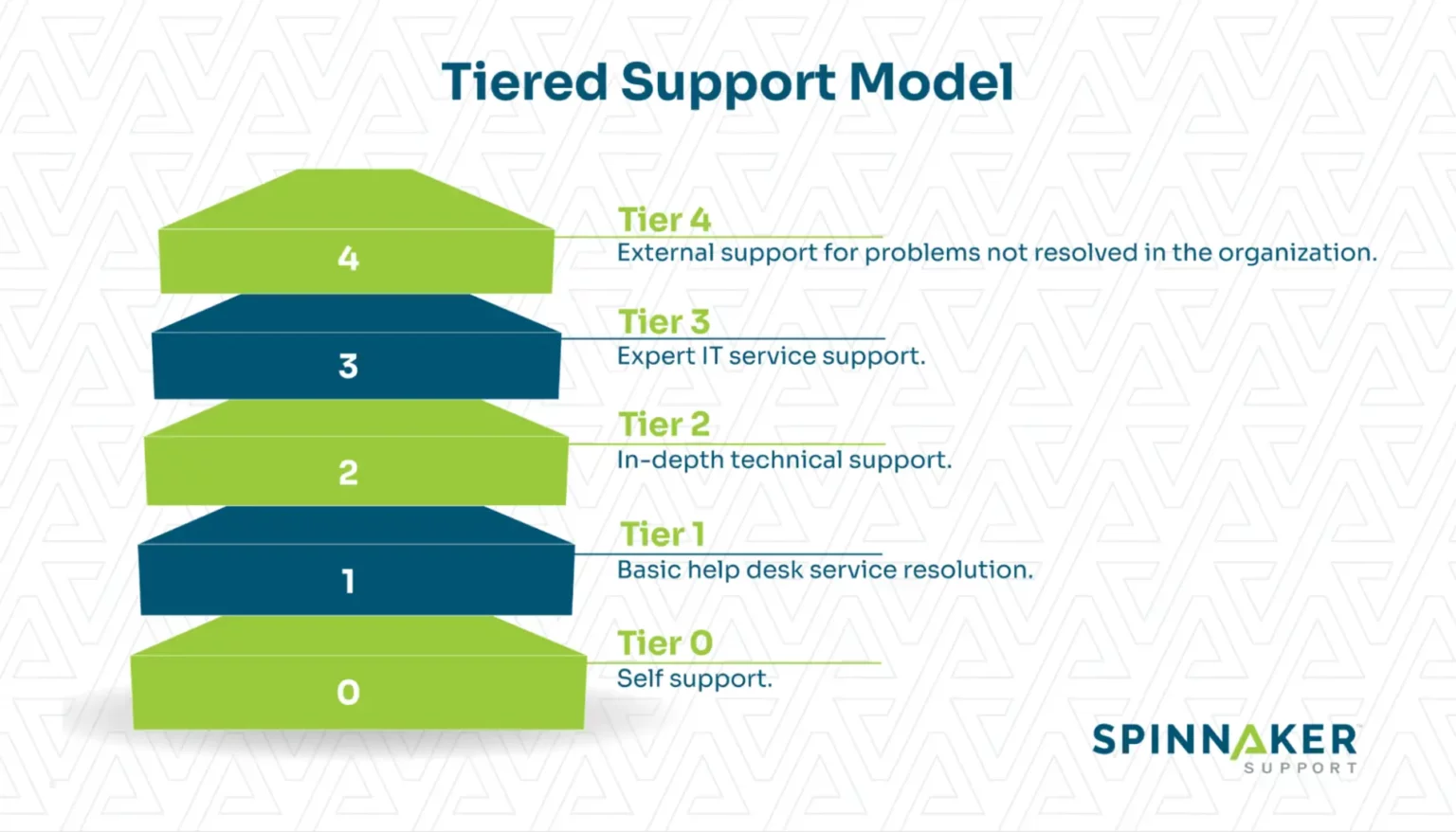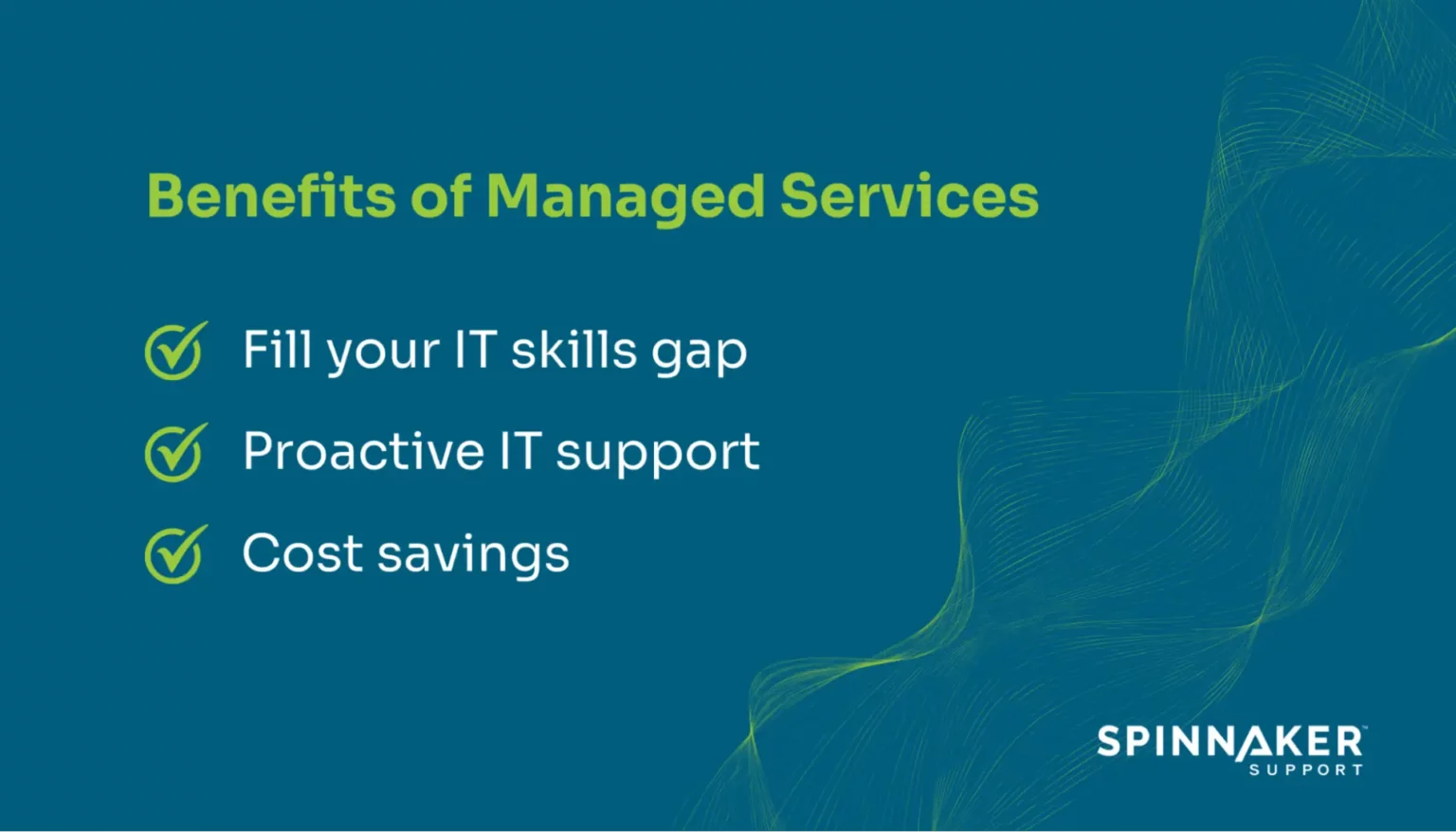
Businesses rely on IT support to remain competitive and operational. Since customers want faster, better, and more convenient IT support, companies must work hard to develop new support models and capabilities to meet their needs.
IT support models enable you to set up scalable and effective strategies to serve your customers better and help you meet your business goals.
In this article, we’ll examine the significance of the IT support model, describe the various support options, and explain why managed services are a superior alternative to traditional IT support.
What is an IT support model?
Achieving optimal performance and excellent customer experience requires businesses to maintain their systems operating at peak performance through IT support models.

An IT support model is a system of tools and technologies used by an organization’s IT staff to ensure the smooth delivery of all IT services to customers. Companies use IT support models to define the steps they should take to plan, build, develop, and provide IT support services to their customers.
Why does your business need an IT support model?
Implementing an IT support model helps to standardize support, service, and product delivery. IT support models encourage businesses to develop a systematic strategy for managing IT services.
Thus, it helps align IT support efforts with business objectives, speeds up the resolution of critical IT issues, and allows businesses to institute proper support strategies.
Aligning your support processes through an IT support model can help you become customer-centric by optimizing self-service and standardized procedures. It also makes it easier to coordinate incoming requests for faster service delivery.
Types of IT support model options
With the increasingly competitive business landscape, poor customer experiences will likely spoil your brand reputation. More businesses are realizing they need to boost the quality of their IT support services to stay competitive.
Organizations often use formal, independent IT support and service frameworks to define their IT support strategies. Such frameworks include the Information Technology Infrastructure Library (ITIL), ISO 20000, or other formal standards and methods.

Here are some of the IT support options you can implement.
Fully-internal support option
When implementing this support option, your internal IT team is solely responsible for system uptime and resolving incident tickets. As your business grows, you need a large internal support team to deal with arising issues.
One approach a business can take when implementing a fully internal support option is the tiered support model. The ITIL framework includes the tiered support model as a proven good practice for dealing with repetitive requests quickly.
The tiered support model has existed since the early days of technological advancement, and it has several tiers for handling service requests.

Below, we explain what each tier of the model represents:
- Tier 0: Includes self-service and automated processes that support users and connect them to relevant personnel.
- Tier 1: Includes service agents who provide first-line support for service requests. They solve recurring minor issues, and if they can’t fix the problem, they’ll escalate to tier 2 support.
- Tier 2: Consists of technical and application management teams with more specialized technical knowledge and skill sets. They handle escalations from tier 1 personnel.
- Tier 3: Consists of a development team or vendor support. Tier 3 support resolves only the most complex issues. After the problem is fixed, they notify the tier 2 and tier 1 teams, who close the ticket.
- Tier 4: Unresolved issues beyond your organization are escalated to external support.
The tiered model has some limitations, and current IT support challenges are increasing the need to implement more optimal solutions than the traditional tiered model.
Some of the limitations of the tiered support model include long queues, delays, and backlogs as more service requests come in. There’s also siloed knowledge distribution, meaning if a solution to a recurring issue is solved at a higher tier, the workaround knowledge isn’t shared between tiers.
The siloed knowledge distribution also results in bouncing tickets due to delays before escalation to suitable personnel. Additionally, with a tiered approach, there’s limited collaborative culture, resulting in a slower issue-to-resolution rate. Support agents also constantly tackle recurring service requests, resulting in boredom and burnout.
Overall, implementing a fully internal support model requires you to upskill or hire the necessary resources to meet growing business demands. With limited staff resource constraints, you risk disrupting business continuity.
Mixed support option
The mixed support model combines support from internal customer support teams and outsourcing to external vendors. With this model, you can seek partial external support to complement your IT team.
Businesses can opt for vendor or third-party support as their external provider. When choosing between vendor and third-party support, the latter often offers more flexible and comprehensive services.
Third-party support is much more cost-effective than vendor support and can help organizations fill capability gaps in their internal IT team. For example, Partner Communications wanted to lower its Oracle software maintenance costs without sacrificing quality of service.
They opted for a third-party support provider, Spinnaker Support, who provided easier access to knowledgeable support staff. What’s more, Spinnaker Support’s assistance helped Partner cut their annual support costs by over 60% compared to their spending on Oracle Support.
Fully outsourced support option
This support model involves full external IT support. Businesses with insufficient internal resources often seek external support to maintain critical business processes. You can either opt for vendor support, break or fix, or managed services.
Let’s take a look!
Vendor support
You can seek support from your software vendor to maximize the value of your applications and resolve common issues. However, one thing to note is that vendor support terms and fees typically differ throughout your product lifecycle.
In hindsight, most vendors don’t support end-of-service life (EOSL) software. For example, SAP has committed to only maintaining SAP S/4HANA until 2040 and SAP Business Suite 7 core applications until 2027, with optional extended maintenance until 2030.
Thus, when selecting vendor support, you should carefully examine whether their support options fit your business development needs in the long run.
Break or fix services
As its name suggests, when major incidents occur, you call IT experts to diagnose and fix IT issues. The cost of break or fix services is usually per hour or incident.
With fast responses and ISO-certified processes, break-or-fix services from third parties like Spinnaker Support can help keep your applications at peak performance.
For example, most Oracle and SAP users build custom features to meet their changing business needs. Spinnaker Support engineers can troubleshoot and fix any problems that new or current customizations may cause. They work quickly and thoroughly to resolve all issues, whether in standard code or not.
Managed services
Unlike traditional software support, managed services are ongoing IT support that doesn’t depend on triggers from service tickets. Using managed services, your company can delegate specific IT tasks, allowing IT staff to focus on higher-priority projects.
Many companies of all sizes and industries now opt for managed services to quickly and affordably get technology expertise and flexible support. As such, by 2027, the worldwide managed services market is expected to be worth more than $300 billion.
Managed services providers can help you avoid the hassle of hiring more IT staff. For example, suppose you need IT assistance with your Siebel CRM. In that case, you can rely on Spinnaker Support’s managed services to provide you with a large, knowledgeable team of Oracle experts who are familiar with fixing just about any issue that could arise within Siebel.
Leveraging managed services over traditional support models
Maintaining optimal performance in the face of competing priorities and limited resources is a constant challenge that businesses face. Traditional IT support models often have various drawbacks, such as delays and lengthy response times.
So, can managed services help you achieve better support for your customers and business?

Unlike traditional support models, where an incident ticket triggers incident resolution and escalation, managed services include ongoing and proactive support.
With managed services, flexible and extensible support is provided regularly by an external team of experienced engineers. As a result, your company maintains optimal performance of business applications.
There are a few ways in which managed services can help you achieve optimal performance.
Fill your IT skills gap
Managed services providers like Spinnaker Support offer ITIL-centered services customized for your operations and applications. They deeply integrate and coordinate with your existing customer service team.
Moreover, you get access to an integrated team of ITIL Level 2 and 3 engineers with an average of over twenty years of experience monitoring your systems.
For example, Craig Greenholt, ITC VMO and IT Infrastructure Architect at Lexmark, says, “We had a problem with Siebel early on that we hadn’t been able to fix for more than a year. Spinnaker Support stepped in and resolved it.”
Contacting a managed service provider is a quick and reliable way to gain access to technical expertise, freeing up your IT staff to focus on other critical business needs.
Spinnaker Support offers managed services for several software ecosystems, including SAP and Oracle. Their services are flexible and extensible, and they truly focus on understanding your business goals to reduce disruptions and downtime.
With Spinnaker Support, you can get comprehensive services anchored on the four pillars of IT service delivery to give your customers a good user experience.
Proactive IT support
Managed services often involve ongoing and proactively planned support activities performed regularly to address issues in your IT infrastructure. Managed service providers like Spinnaker Support provide 24/7 monitoring and complete system management.
In addition to that, we offer deep integration and seamless coordination with your internal customer support team alongside a team of experts. You can opt for lifetime assistance for your IT products as long as needed.
What’s more, Spinnaker Support has a team of expert Level 4 staff who can solve more complex application issues. We have effective communication processes to ensure swift responses, especially when escalation is needed.
Cost savings
Traditional support models like the tiered approach often face limitations that affect customer satisfaction, thus damaging your brand’s reputation.
While you can opt for vendor support to complement your internal IT team, they often come with hefty support fees. Further, large organizations can opt for multi-vendor support options to manage their disparate systems and IT infrastructure.
However, to maintain your critical systems at peak performance, you can opt for managed services to counter your budget constraints and competing business priorities. Managed services can help you combine all your support efforts with one trusted partner, saving you support costs.
For example, Oando relied on its IT team to reduce costs without slowing innovation. By switching to Spinnaker Support from Oracle Support, the company has saved over $4 million in over five years and is redirecting those savings to other pressing business needs.
Managed service providers like Spinnaker Support offer professional support at a fraction of vendor support fees. Deborah Jones, Oracle Applications Manager at Merichem, says, “Spinnaker Support engineers go above and beyond to handle issues quickly and help us improve process efficiency. Their advisory services save us time and money on consulting and implementation fees.”
Conclusion
A well-defined IT support model can help your company maintain its reputation and customer retention by providing optimal support for internal and external applications. You can choose managed services if you don’t have the time or money to set up an in-house support team.
With Spinnaker Support, you get access to a team of expert engineers who help you develop IT support processes. This way, your IT teams have more time to focus on higher priorities.
What’s more, you get ITIL-centered managed services at a fraction of the cost of vendor support. To get started with Spinnaker Support, contact one of our support experts today!